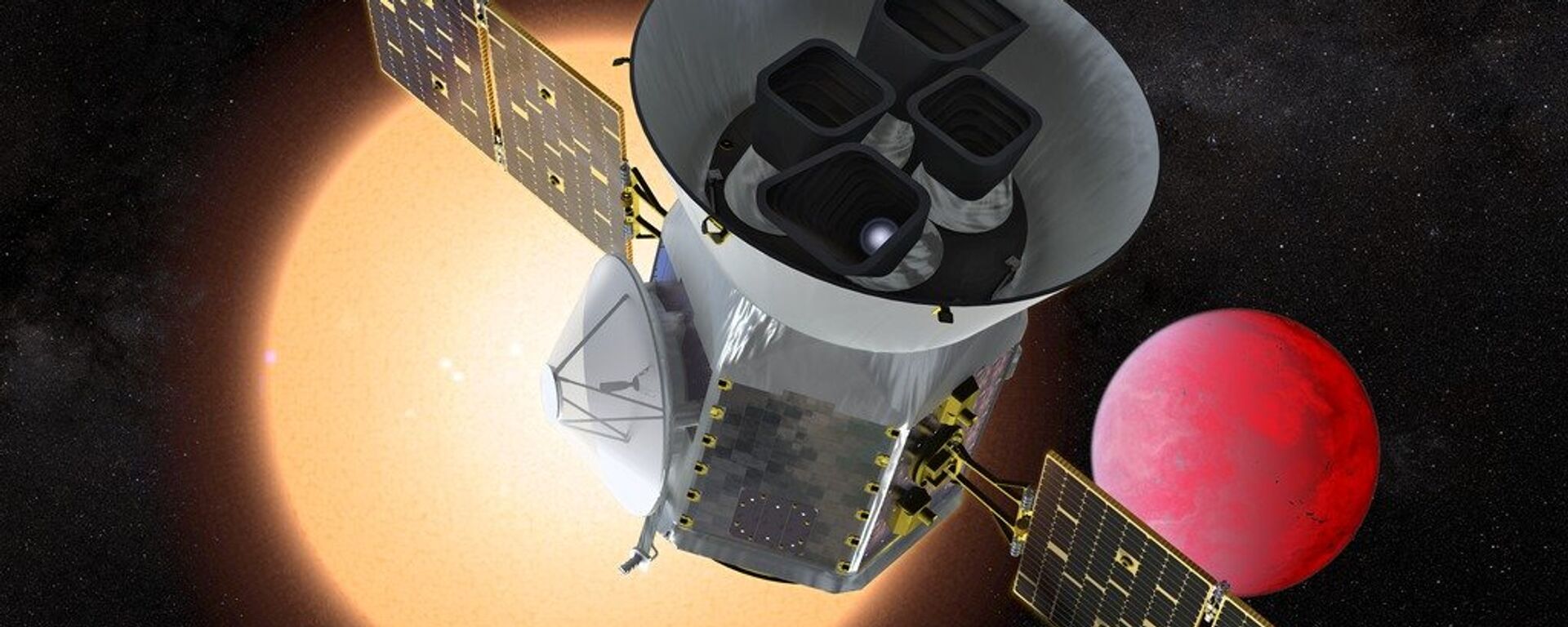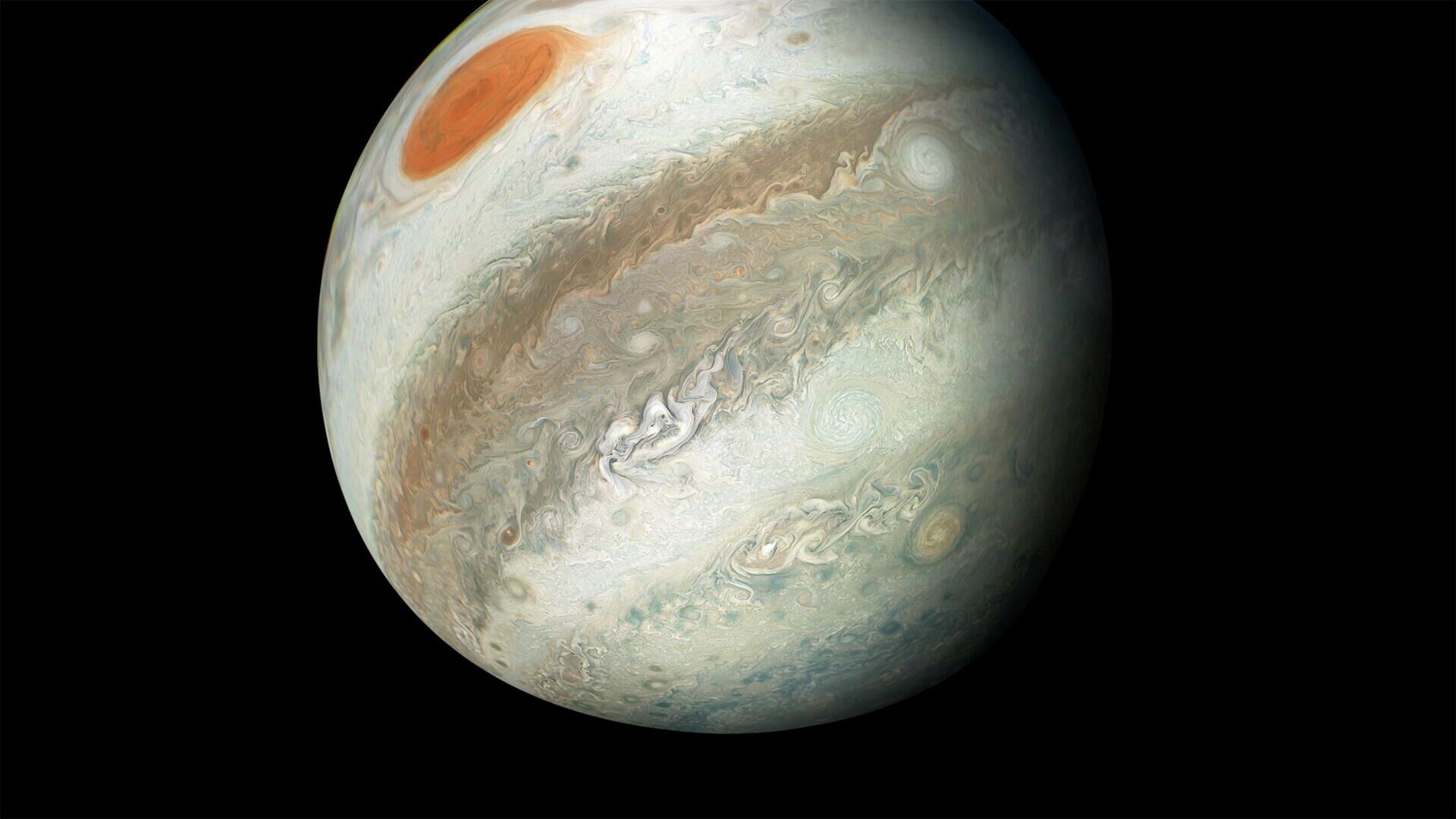https://sputnikglobe.com/20231219/alien-hunting-astrophysicists-drop-catalog-of-earth-like-planets-with-jupiter-like-siblings-1115687336.html
Alien-Hunting Astrophysicists Drop Catalog of Earth-Like Planets With Jupiter-Like Siblings
Alien-Hunting Astrophysicists Drop Catalog of Earth-Like Planets With Jupiter-Like Siblings
Sputnik International
A group of astrophysicists have published a database of stars they’ve found that have both small, Earth-like planets as well as large, Jupiter-sized ones - a recipe scientists see as crucial for the formation of life on our world.
2023-12-19T22:32+0000
2023-12-19T22:32+0000
2023-12-19T22:29+0000
beyond politics
astronomy
exoplanets
database
jupiter
extraterrestial life
https://cdn1.img.sputnikglobe.com/img/07e5/0a/1c/1090292284_0:0:1920:1080_1920x0_80_0_0_7db01d9ac8ebd15a810f3e015ea6df2a.jpg
The database, called the Kepler Giant Planet Search, took a decade to compile using data from the W. M. Keck Observatory on Mauna Kea in Hawaii. It is set to be published in January 2024 in the Astrophysical Journal Supplement Series."The science question that I've been trying to answer over the past decade is: Of the other small planets like Earth that are out there, which of them have Jupiter siblings? Because this might be an important characteristic to look for, if we want to figure out where to find life,” she added.In order to build the database, Weiss’ team recorded nearly 3,000 radial velocities of 63 sun-like stars that together had 157 known small planets, ranging in size from as small as Mars (15% Earth’s mass) to as large as Neptune (17 Earth masses). While some were icy, gassy planets like Neptune, many are likely rocky worlds like Earth and Mars, which might be suitable for life.During that study, they also found 13 Jupiter-like words in those same systems, as well as three companion stars.The scientists used the radial velocity method, which is much more tedious, to spot the gas giants, because the common “dimming” method used by the Kepler space telescope is only useful for finding smaller worlds that closely orbit their star, resulting in periodic dimming of the light reaching Earth as it passes between the Earth and the star. However, Weiss’ team wanted planets more like Jupiter, which takes 12 years to orbit our sun, because recent studies have suggested that Jupiter played a highly important role in allowing life to develop on Earth.He noted that it was possible for Jupiter-like worlds to both protect smaller, inner solar system planets from comets and asteroids, but also to pose a threat to them by pulling them out of stable orbits that would allow life to develop.Weiss said the paper will serve as the basis for future research into how other star systems are laid out, function, and might sustain life.
https://sputnikglobe.com/20231103/salts-organic-compounds-discovered-on-jupiters-ocean-moon-ganymede-1114703599.html
https://sputnikglobe.com/20231129/astronomers-spot-rare-six-planet-system-that-orbit-star-in-sync-1115288565.html
Sputnik International
feedback@sputniknews.com
+74956456601
MIA „Rossiya Segodnya“
2023
News
en_EN
Sputnik International
feedback@sputniknews.com
+74956456601
MIA „Rossiya Segodnya“
Sputnik International
feedback@sputniknews.com
+74956456601
MIA „Rossiya Segodnya“
is there life in other solar systems, does jupiter protect us, kepler database
is there life in other solar systems, does jupiter protect us, kepler database
Alien-Hunting Astrophysicists Drop Catalog of Earth-Like Planets With Jupiter-Like Siblings
A group of astrophysicists have published a database of stars they’ve found that have both small, Earth-like planets as well as large, Jupiter-sized ones - a recipe scientists have come to see as crucial for the formation of life on our world.
The database, called the Kepler Giant Planet Search, took a decade to compile using data from the W. M. Keck Observatory on Mauna Kea in Hawaii. It is set to be published in January 2024 in the
Astrophysical Journal Supplement Series.
"This catalog is the first of its kind and an unprecedented opportunity to explore the diversity of planetary systems that are out there with things that are like the solar system, but not exactly the solar system, and it gives us a chance to rewrite the story of how the planets form," Lauren Weiss, assistant professor in the Department of Physics and Astronomy at the University of Notre Dame, and leader of the team that published the catalog, said in a news release.
"The science question that I've been trying to answer over the past decade is: Of the other small planets like Earth that are out there, which of them have Jupiter siblings? Because this might be an important characteristic to look for, if we want to figure out where to find life,” she added.

3 November 2023, 21:11 GMT
In order to build the database, Weiss’ team recorded nearly 3,000 radial velocities of 63 sun-like stars that together had 157 known small planets, ranging in size from as small as Mars (15% Earth’s mass) to as large as Neptune (17 Earth masses). While some were icy, gassy planets like Neptune, many are likely rocky worlds like Earth and Mars, which might be suitable for life.
During that study, they also found 13 Jupiter-like words in those same systems, as well as three companion stars.
The scientists used the radial velocity method, which is much more tedious, to spot the gas giants, because the common “dimming” method used by the Kepler space telescope is only useful for finding smaller worlds that closely orbit their star, resulting in periodic dimming of the light reaching Earth as it passes between the Earth and the star. However, Weiss’ team wanted planets more like Jupiter, which takes 12 years to orbit our sun, because recent studies have suggested that Jupiter played a highly important role in allowing life to develop on Earth.
“We often take Jupiter for granted but having a giant planet like Jupiter can have a profound effect on the habitability of terrestrial planets like Earth,” Stephen Kane, a planetary physicist at the University of California, Riverside, who has authored numerous papers on Jupiter, told US media in August 2022.
He noted that it was possible for Jupiter-like worlds to both protect smaller, inner solar system planets from comets and asteroids, but also to pose a threat to them by pulling them out of stable orbits that would allow life to develop.

29 November 2023, 18:52 GMT
Weiss said the paper will serve as the basis for future research into how other star systems are laid out, function, and might sustain life.
"Probably the thing I'm most excited about is revisiting this story of how the Earth formed," Weiss said. "Now that we have more information about what other kinds of planetary systems are out there, we're looking for patterns, finding new discoveries, and these possibilities really excite me."




